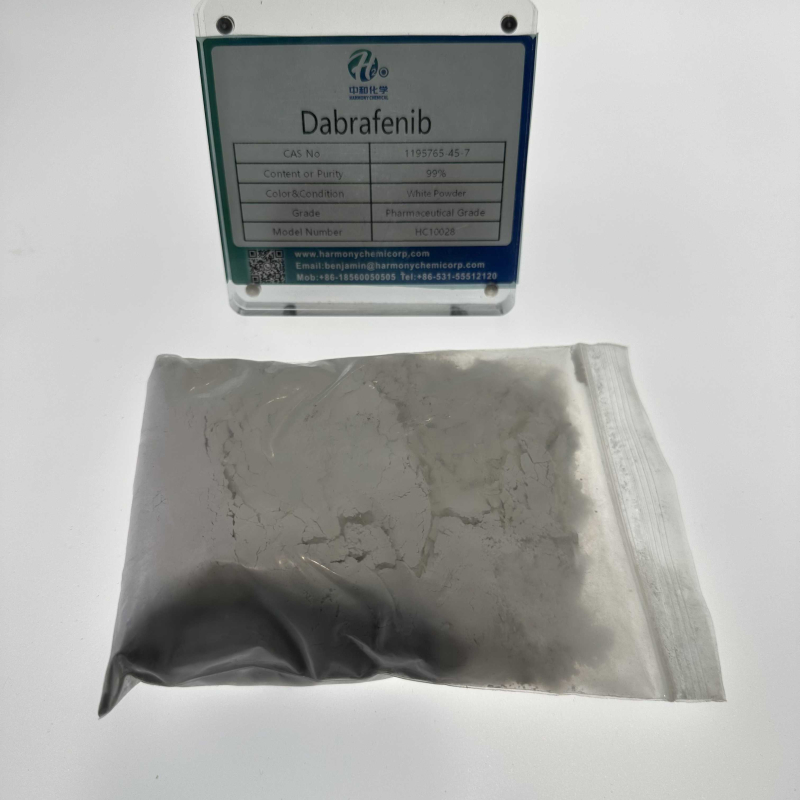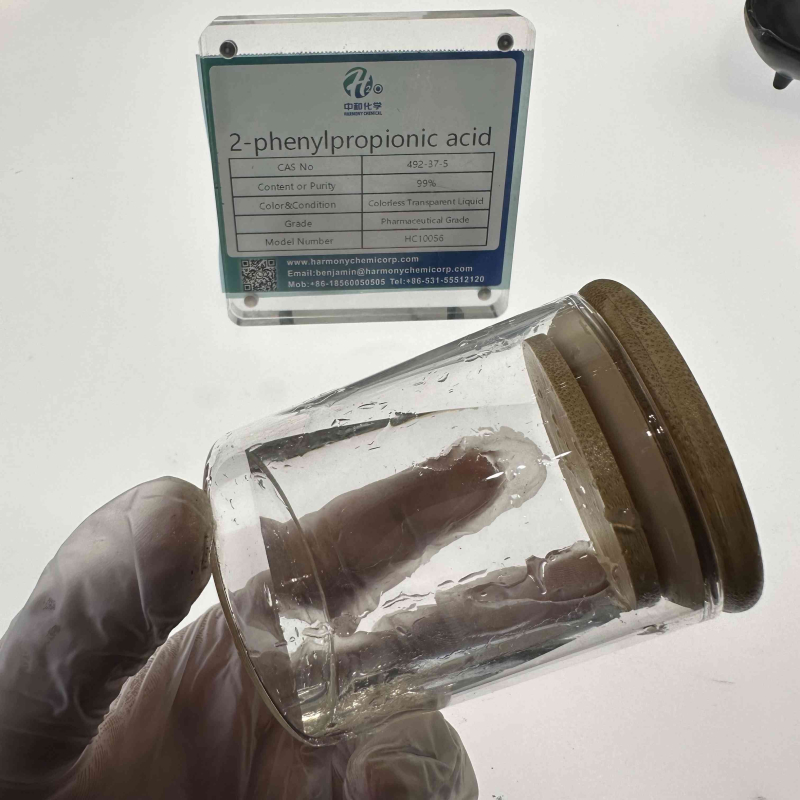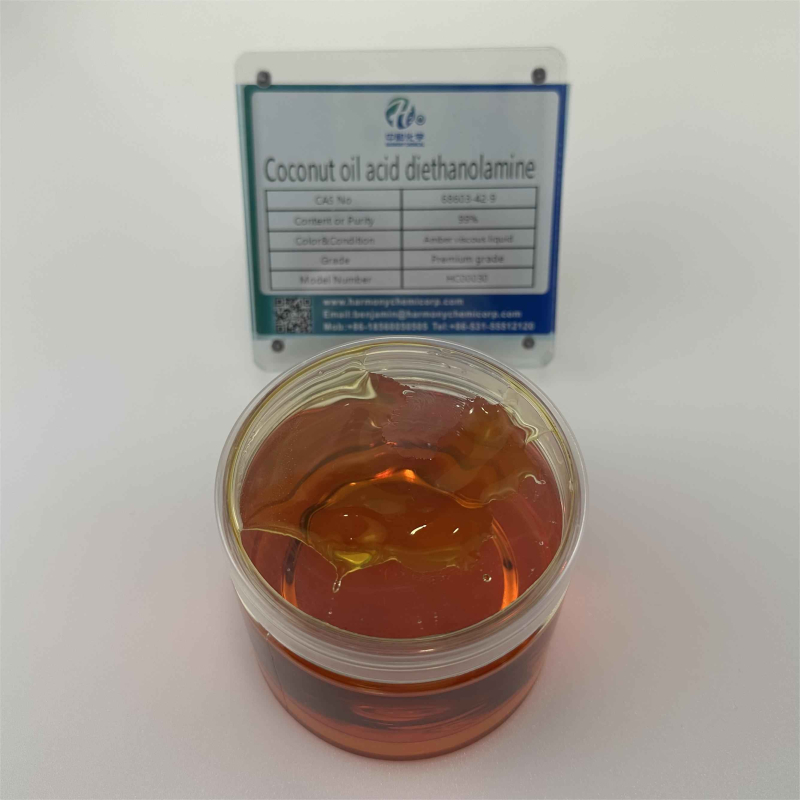nameTofacitinibCAS NO477600-75-2Molecular formulaC16H20N6Omolecular weight312.38density1.3Storage conditions-20°CsolubilitySoluble in DMSO (up to 100 mg/ml) or in Ethanol (up to 100 mg/ml).formPale powder.Acidity coefficient (pKa)6.04±0.60(Predicted)colourOff-white
Contact Now
nameTrilostaneCAS NO13647-35-3Molecular formulaC20H27NO3molecular weight329.43melting point264 °Cboiling point467.02°C (rough estimate)density1.1213 (rough estimate)Storage conditions2-8°Cformpowdercolourwhite to tan
Contact Now
nameLOXO-292CAS NO2152628-33-4Molecular formulaC29H31N7O3molecular weight525.6density1.36±0.1 g/cm3(Predicted)Storage conditionsStore at -20°CformA crystalline solidAcidity coefficient (pKa)14.00±0.29(Predicted)
Contact Now
Prilocaine is an amide type close by anesthetic. Its anesthetic depth and pace are similar to Lidocaine, alternatively its size is prolonged and its vasodilation have an impact on is weak. The toxicity is limit than lidocaine. Clinically used for close by anesthesia, specially fantastic for victims who hold away from the utilization of adrenaline.namePrilocaineCAS NO721-50-6Molecular formulaC13H20N2Omelting point37-38°boiling pointbp0.1 159-162°density1.0117 (rough estimate)refractivitynD20 1.5298Storage conditions2-8°CformCrystalline powderSOLUBLE6.169g/L(25 ºC)
Contact Now
nameUlipristal AcetateCAS NO126784-99-4Molecular formulaC30H37NO4molecular weight475.62melting point183-185 ºCboiling point640.1±55.0 °C(Predicted)density1.19Storage conditions-20°Cformpowdercolourwhite to beige
Contact Now
nameAlbendazoleCAS NO54965-21-8Molecular formulaC12H15N3O2Smolecular weight265.33melting point208-210 °Cdensity1.2561Storage conditions2-8°CformneatcolourWhite to Off-WhiteSOLUBLE0.75mg/L(209 ºC)
Contact Now
AppearanceWhite crystalline powder, white block shape, white block shapeContent%≥ ninety nine ninety five 90Melting factor ℃128 128 128Water solubility 20 ℃ one hundred a hundred one hundred 100Water solubility60 ℃ 429 429 420PH valueshut to neutral, shut to neutral, 4% aqueous answer pH price 7.50-8.50 7.50-8.50 7.00-9.00Moisture%≤ 0.4 0.5 0.8UsageFlame retardant processing for wallpaper, fibers, carpets, curtains, and different materials.
Contact Now
Melting point: 165-185 ℃Density: 1.08g/cm3Refractive index: 1.488 (20 ℃)Water absorption rate: no longer extra than 0.4%Softening temperature: 60-65 ℃Glass transition temperature: 66-84 ℃ (varies relying on diploma of polymerization)Solubility: Soluble in most natural solvents such as alcohols/ketones/ethers/esters, insoluble in carbon hydrocarbon solvents [2]Application Editing1.
Contact Now
Polyvinyl alcohol resin (PVA) aqueous answer has awesome moldability and emulsifying properties, forming a movie with amazing adhesion, solvent resistance, friction resistance, tensile strength, and oxygenbarrier properties.Solubility: Soluble in water, typically heated to 65-75 ℃ for whole dissolution. Insoluble in gasoline, kerosene, vegetable oil, benzene, toluene, dichloroethane, carbon tetrachloride, acetone, ethyl acetate, methanol, ethylene glycol, etc. Slightly soluble in dimethyl sulfoxide.
Contact Now
Polyamide resin, as a massive quantity of engineering plastics, is extensively used in fields such as machinery, automobiles, electrical appliances, cloth equipment, chemical equipment, aviation, metallurgy, etc.Becoming an fundamental structural fabric in a number industries, its most important traits are as follows:1. Excellent mechanical properties. Nylon has excessive mechanical energy and precise toughness.2. Good self lubrication and friction resistance.
Contact Now
nameDabrafenibCAS NO1195765-45-7Molecular formulaC23H20F3N5O2S2molecular weight519.56melting point214-216oCboiling point653.7±65.0 °C(Predicted)density1.443Storage conditions-20°CformWhite solid.colourOff-white
Contact Now
The conductivity of carbon black is carefully associated to its shape (especially graphite microcrystalline structure), floor properties, and particle size. The conductive mechanism of carbon black in rubber often consists of conductive channel and Field electron emission mechanism. The conductive channel mechanism is that carbon black aggregates come into contact with every different in the adhesive to structure a community like channel and behavior electricity.
Contact Now
Name3-ChloropropiophenoneCAS NO936-59-4Molecular formulaC9H9ClOmelting point48-50 °Cdensity1.1115 (rough estimate)flash point>230 °FStorage conditionsInert atmosphere,Room TemperaturesolubilitySolidcolourOff-White to Pale YellowSOLUBLEInsoluble
Contact Now
purposeHexafluorozirconate is often used to make optical glass and fluorozirconate.Used for metallic floor therapy and cleaning, as nicely as for the manufacturing of wool, leather-based garb industry, atomic electricity industry, superior electrical materials, and refractory materials.Used for metallic surfaces and coatings.
Contact Now
Mercaptopropionic acid is an organic compound with the chemical formula C3H6O2S. It is a transparent liquid with a strong sulfide odor, foul odor, and toxicity.
Contact Now
AppearanceAmber obvious liquidSolid content% ≥ 40.0Density (20 ℃)g/cm3 ≥ 1.20PH fee (1% aqueous solution)9.0-11.0Solubility15gPolyaspartic acid (PASP) belongs to a crew of polyamino acids. Polyaspartic acid is susceptible to breakage due to the motion of microorganisms, fungi, and different factors, ensuing in the degradation of environmentally pleasant ammonia, carbon dioxide, and water. Therefore, polyaspartic acid has a extensive vary of uses.
Contact Now
Chinese nameSodium oleateChinese aliascis 9-octadecenoic acid sodium salt; (Z) -9-octadecenoic acid sodium salt -9-octadecenoic acid sodium salt; 9-Octadecylic acid sodium; Sodium octadecene; (Z) -9-Octadecylic acid sodium salt;English nameSODIUM OLEATEEnglish aliascis Oleate sodium salt; Cis-9-Octadecenoic acid sodium salt, Oleic acid sodium salt; Eurol; Pionin D 951P; Oleic Acid Sodium Salt;CAS number143-19-1Molecular formulaC18H33NaO2Molecular weight304.44300Precision quality304.23800PSA40.13000Sodium oleate, additionally acknowledged as sodium octadecene, cis 9-octadecenol,
Contact Now
Nickel chloride can take part in the response as a moderate Lewis acid, catalyze the coupling reaction, and coordinate with metallic hydride as a lowering agent to take part in the selective discount reaction. As a moderate Lewis acid, nickel chloride can realise the regioselectivity rearrangement of dienols in alcohol water solution.
Contact Now
Thermoplastic resin, hydrolyzed into polyvinyl alcohol in acid or alkaline solvents, is the main raw material for preparing polyvinyl alcohol. When molecules contain photosensitizers, they are sensitive to light and undergo decomposition reactions under the action of ultraviolet light or electron beams, exhibiting positive photosensitive resin properties. It can copolymerize with various monomers with double bonds, introducing various functional groups and possessing different properties.
Contact Now
CAS NO492-37-5Boiling point260-262 °CDensity1.1 g/mL at 25 °Cflash point>230 °FStorage conditionsSealed in dry,Room TemperatureFormLiquidColourClear pale yellow to yellowpH value3 (5g/l, H2O, 20℃)SOLUBLE10 g/L (20 ºC)Molecular formulaC9H10O2
Contact Now
Boiling Point168-274 ° COdorat 100.00?%. mild ammoniaSOLUBLE5-10 g/100 mL at 18 ºCStabilityStable. Combustible. Incompatible with strong oxidizing agents.Introduction: N, N-bis (hydroxyethyl) coconut oil amide can be used as a surfactant.
Contact Now
Melting point>300 ° CDensity1.203-1.209 g/cm3FormPowderColorWhitewater solubilitySoluble in water.Merck147668Potassium silicate is a colorless or barely yellow translucent to transparent glassy substance. It has hygroscopicity. There is a robust alkaline reaction. Dissolve in acid to precipitate silica. Slowly soluble in bloodless water or nearly insoluble in water (depending on its composition), insoluble in ethanol.
Contact Now
Melting point 1204 ° CDensity2,52g/cm3FormPowderSpecific gravity 2.52ColorwhiteWater solubilityinsolublecoldH2ChemicalbookO, decomposeinboilingH2OHydrolysis sensitivity 2: reactswithaqueousacidLithium silicate is a compound fashioned with the aid of the shape of metal lithium and silicate ions, and its alternate identify is lithium water glass. Most of them use the lithium hydroxide technique to react sodium silicate with sulfuric acid to produce hydrated silicic acid and sodium sulfate.
Contact Now
Appearance and properties: white powderDensity: 1.498 g/cm3Melting point: 136-140 ° C (lit.)Boiling point: 526.7 º C at 760 mmHgFlash point: 272.3 º CIt is used to manufacture heat-resistant enameled wires and paints with splendid mechanical properties, a variety of carbamate plastics, water-soluble baking paints, unsaturated polyester resins, pesticides, plasticizers, dyes, remedy and different natural artificial intermediates.
Contact Now





























